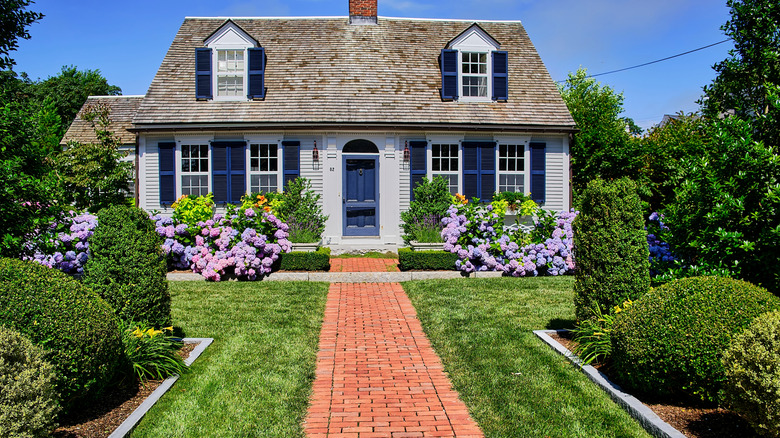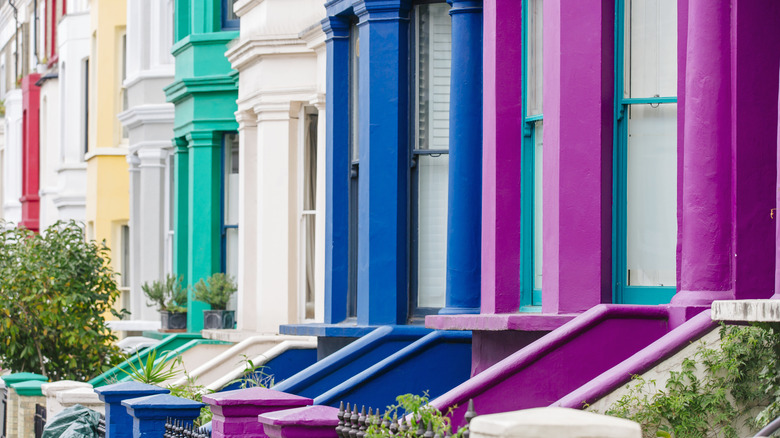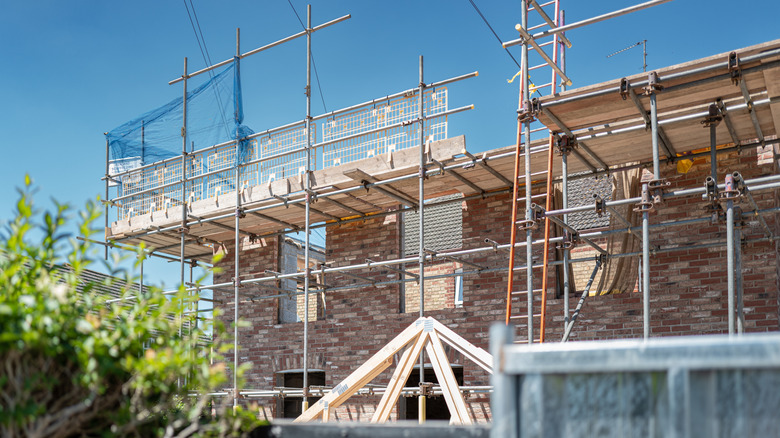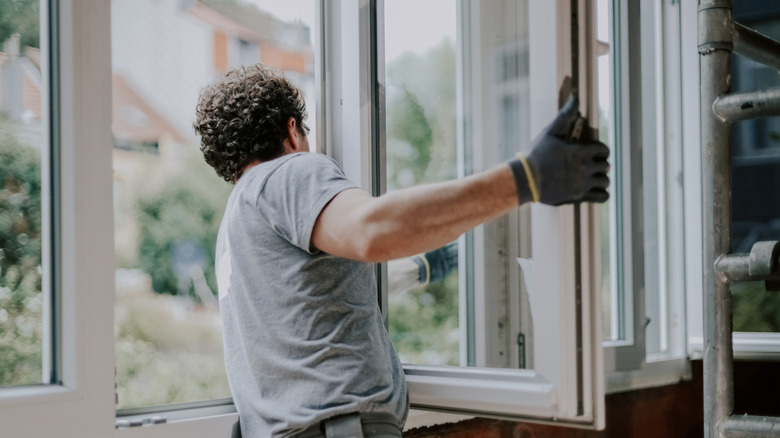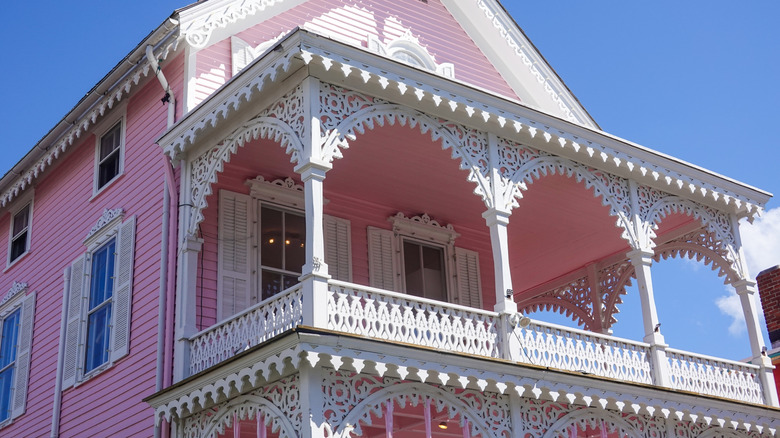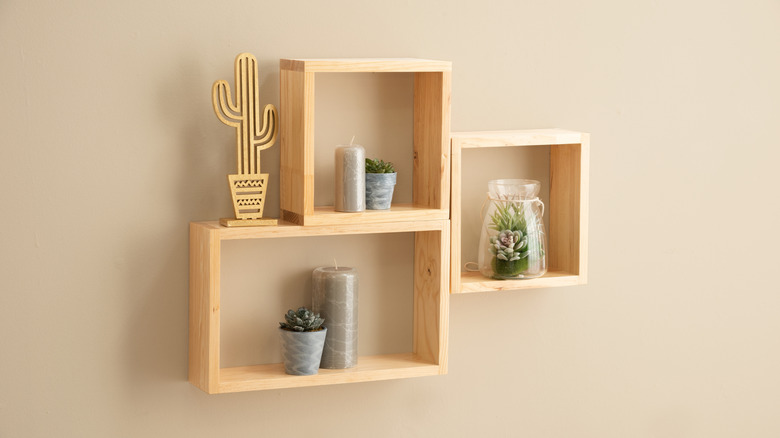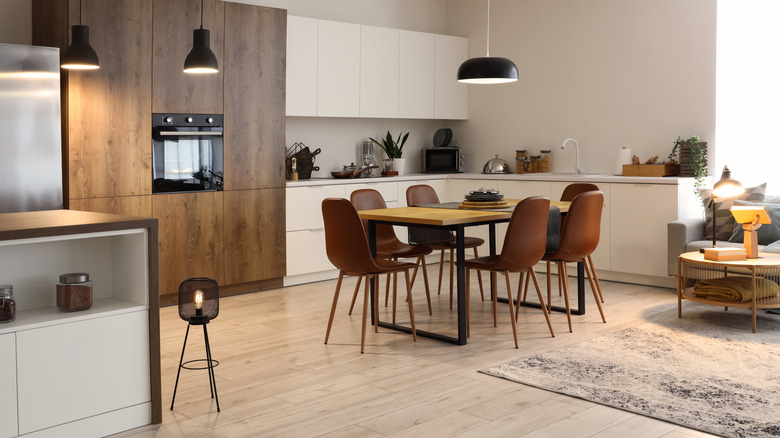7 Mistakes You're Making With Your Cape Cod Home That Scream Inauthentic
Few things are more synonymous with a traditional New England home than a garden full of hydrangeas, chic coastal decor, and the Cape Cod house, which was created by Puritan settlers who came to what is now Massachusetts in the late 17th century. With few resources and the harsh New England coastal climate to contend with, Puritans built simple houses based off traditional English cottages that were all about function, warmth, and protection from the elements. During the Great Depression and into the post-World War II years, when homeowners were in the market for an inexpensive, fuss-free home design, the Cape Cod style regained popularity. Today, you can still find these charming homes up and down the New England coast, especially in Massachusetts areas like Nantucket, Martha's Vineyard — and of course, Cape Cod itself.
Since many Cape Cod homes that are around today were built long after the Puritans, modern imitations of the design sometimes deviate from the original. So if you have a Cape Cod house and want it to truly look like the genuine article, you'll want to steer clear of these seven common home design mistakes — from painting with bright colors to opening the layout — that are red flags and scream "inauthentic."
So what exactly is a Cape Cod house? A traditional Cape Cod house has a very simple design, reflecting the austere times in which these homes were originally built. It generally has a central front door with windows on either side (though some variations have the windows to the right or left of the door); a brick chimney, often right in the center of the house; and a gabled roof with two sloping sides forming a triangle shape.
Using flamboyant color on the house siding
Big, bold colors can be lovely in home decor — but not if your intention is to keep the traditional Cape Cod aesthetic, which is all about a simple and natural look. Historically, the shake shingles on Cape Cod houses were left in the original unpainted cedar, weathered gray, or painted in an unassuming neutral color such as light blue or white. Even doors were kept simple by the earliest builders; but if you wish, get a little creative by painting the front door a statement color to pop against the house's neutral background.
Going crazy with house extensions or additions
Traditionally, Cape Cod homes were only one or one and a half stories, sometimes with a partial upper level that was later added under the existing roof's gables to provide additional living space. So stick to one or two floors max if you want to maintain the integrity of the original design. You should also resist the temptation to add a front porch to your property. True Cape Cod houses were simple dwellings built to withstand the harsh New England winters, which made a front porch for lounging outdoors both impractical and unnecessary.
Removing the shutters
Shutters originally served an important purpose as a means for colonists to protect their homes from the coastal New England elements, such as stormy seas, wind, and icy snow drifts. So if you're looking to keep that authentic Cape Cod look, don't deviate from the original window design by removing shutters — and bonus points if those shutters are functional (i.e. able to open and close) and not merely decorative.
Adding overly decorative trim
Speaking of decorative, while keeping the shutters is a big "yes," adding other extra stuff to the outside of your Cape Cod home is a big "no." That means no large eaves or overhang, no fancy trim, and certainly nothing ornate like what you would find on the exterior of a Victorian style house. Cape Cod homes were simple and all about embracing natural materials, and the exterior design should reflect that.
Using asymmetrical or modern interior decor
Asymmetrical interior design became incredibly popular during the mid-century modern decor movement, but that's the antithesis of what you should be going for if you want an authentically decorated Cape Cod house. For a style that's true to your home's original design, keep interior decor simple and symmetrical. The hearth was the heart of a traditional Cape Cod home, so honor that look in your living room by keeping the fireplace as the focal point with a large mirror or artwork that draws attention to it and by arranging furniture around it.
Incorporating non-native plants or overly ornamental landscaping
Traditional Cape Cod homes are all about elevating simple, natural beauty — and that extends to your landscaping as well. So steer clear of non-native vegetation and embrace native flowers and plants. Also avoid any garden decor that looks over the top, like huge fountains or garden statues. For that all-American finishing touch, consider adding a white picket fence.
Knocking down walls to create an open floor plan
The open floor plan certainly has its appeal. It's airy, spacious, and bright. But that's the opposite of what the early Puritans had in mind when they built their Cape Cod homes, which were all about conserving heat in small, compact spaces. So for a home that harkens back to the early days of its original design, keep the layout cozy and confined.
